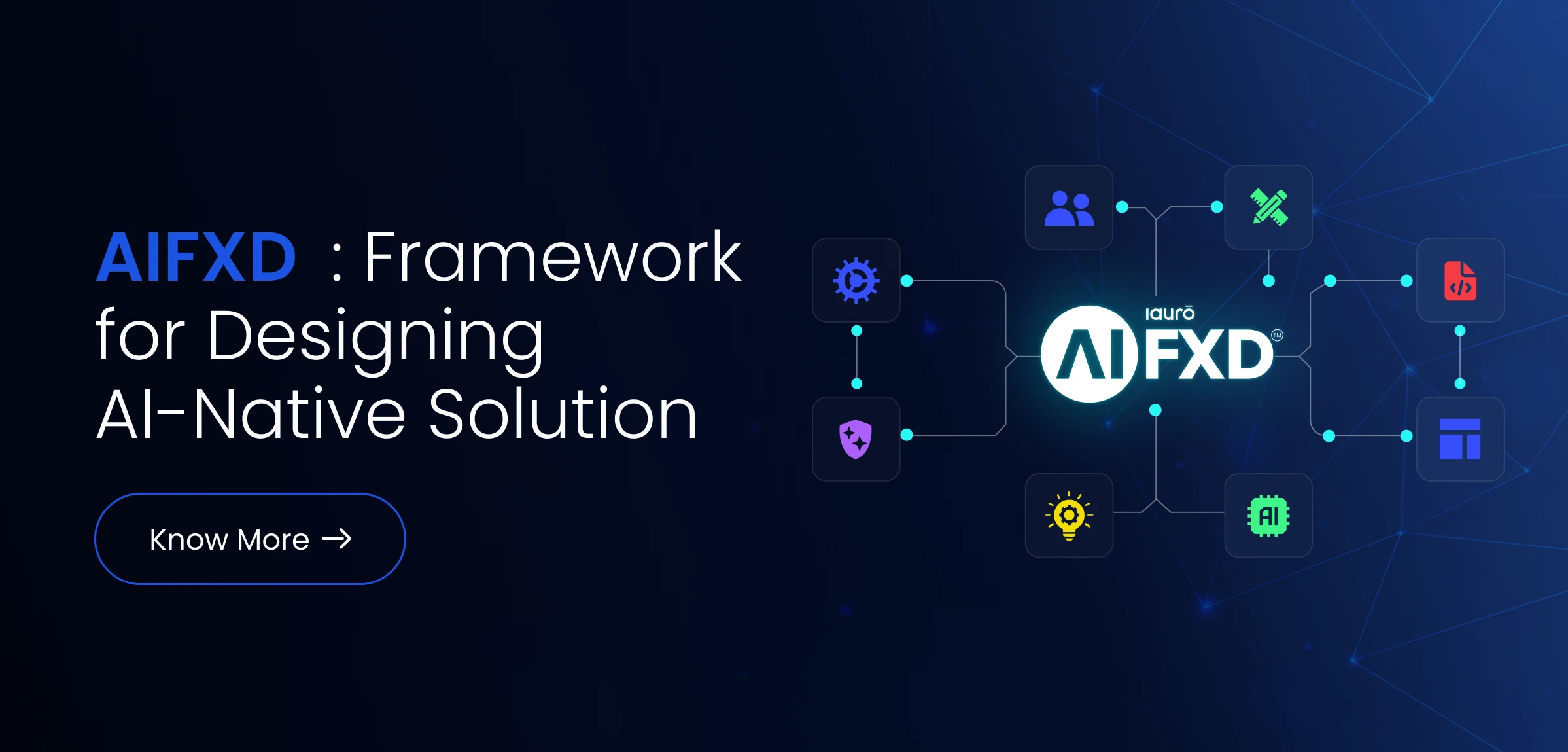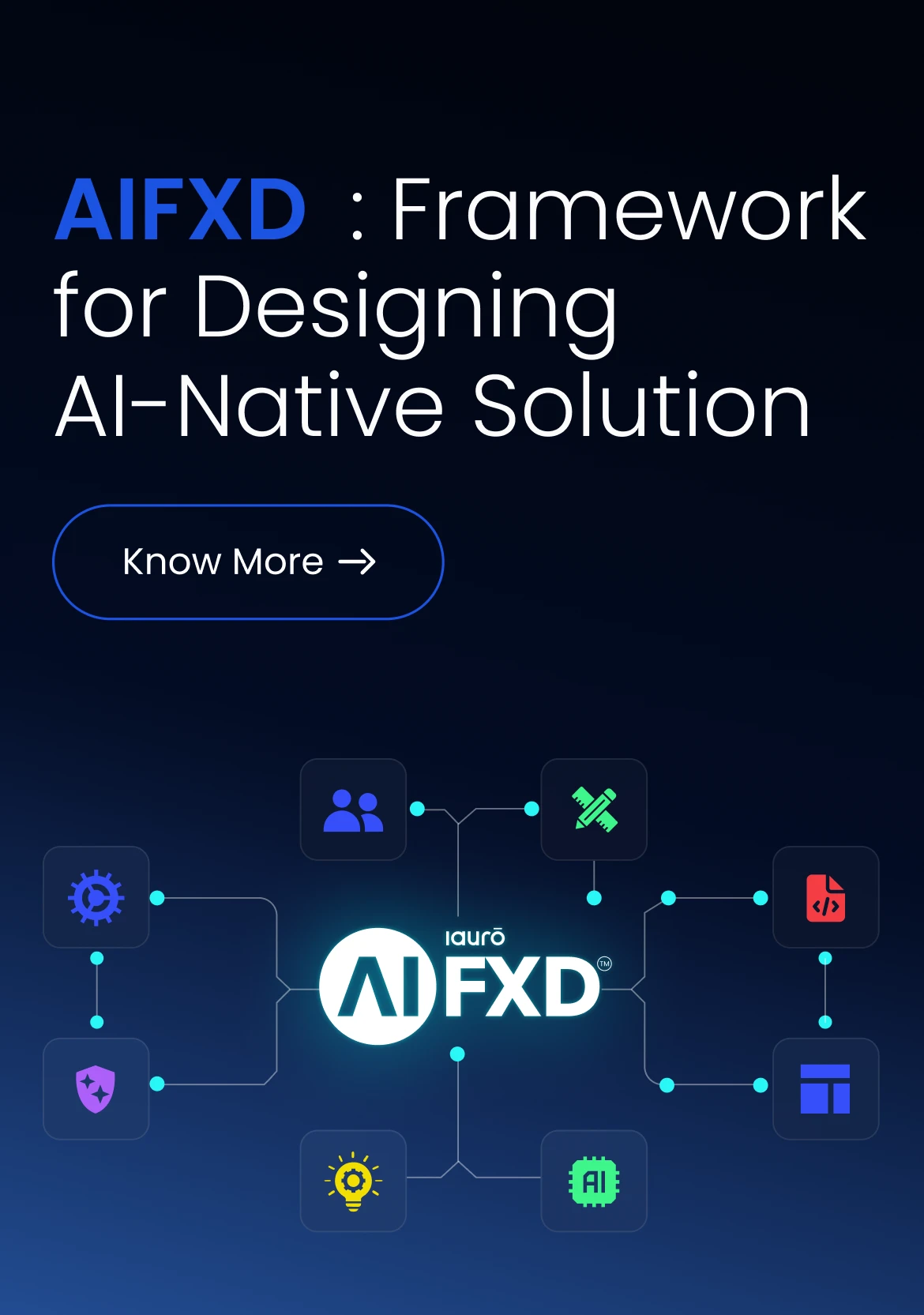The Death of Feature Delivery: Why Digital Leaders Must Now Build Intelligence into Every Experience


Most enterprise digital systems are built like machines: they do exactly what they’re told, nothing more. They ship features. They follow inputs. They escalate when something breaks. And they’ve served us well—for a while.
But that model is starting to crack.
Today, businesses operate in uncertainty. Decisions need to be made in real-time. Context changes by the minute. Customers don’t just want efficiency—they expect intelligence. And yet, most systems remain static. They’re built to deliver features, not outcomes. They react—they don’t reason.
That’s the core problem with traditional feature-first delivery. And it’s why the future of enterprise systems isn’t about adding more functionality. It’s about reimagining the digital core—and rebuilding it through AI-native design.
Why the Feature Model Is No Longer Enoug
In the traditional product mindset, success is measured by how many features you ship. Roadmaps get filled with checkboxes. Teams work sprint to sprint. Releases go out on time, and still—the experience feels stuck.
Because the platform doesn’t evolve. It doesn’t learn. It doesn’t respond to users or adapt to business needs. It’s not built to.
This delivery model creates systems that look full—but act empty. They’re stuffed with modules, buttons, toggles. But when something new happens—a customer changes behavior, a market shifts, a regulation is introduced—the system waits. It waits for a manual override, a support ticket, a human to fill the gap.
This isn’t just inefficient. It’s expensive. Gartner estimates that up to 75% of enterprise AI projects fail to scale, not due to poor models, but because they’re bolted onto static systems that can’t adapt.
The truth? Bolting on intelligence after the fact doesn’t work. If the foundation isn’t built to think, the system can’t learn.
What AI-Native Really Means
AI-native doesn’t mean using more AI tools. It doesn’t mean layering ML models on top of legacy stacks. And it certainly doesn’t mean buying another chatbot.
AI-native means your system is designed from the ground up to sense, decide, and act. Intelligence isn’t a plug-in. It’s the operating logic. The infrastructure, data, workflows, and interfaces are all architected around learning and adaptation.
In AI-native systems:
- Data is continuous, not batched
- Logic is modular and evolving, not rule-based and rigid
- Feedback loops are embedded into every action
- Interfaces change based on user behavior and system learning
These systems don’t need to be told what to do next. They figure it out.
That’s the difference. That’s why feature-based systems can’t keep up—and why AI-native solutions are the only way forward for businesses that want to stay relevant.
From Static to Self-Improving
Let’s break down what AI-native systems do differently.
In a feature-based system, a dashboard might show you data. In an AI-native system, it tells you what to do. It might even do it.
In a traditional product, onboarding is a fixed path. In an AI-native platform, onboarding shifts based on how different users engage, what they skip, and where they hesitate.
In legacy CRMs, alerts get routed by basic logic. In AI-native CRMs, prioritization happens dynamically, based on customer behavior, deal stage, urgency, and even inferred sentiment.
This isn’t magic. It’s design. It’s what happens when you don’t just add AI—but build with it at the core.
Why AI-Native Outperforms Feature Delivery
The business impact of AI-native digital solutions goes far beyond automation. It changes how your organization operates:
Decisions are made faster because intelligence sits where the work happens—not in someone’s inbox. When data is processed and acted on immediately, outcomes accelerate.
Human effort is focused on what matters. AI-native platforms handle the routine, the predictable, and the repetitive. That frees your team to solve edge cases and explore new opportunities.
Systems evolve continuously. You don’t need quarterly releases to fix what’s broken. Feedback loops let your platform improve as users engage with it.
You scale smarter. Because AI-native design is modular, it’s easier to extend, integrate, and repurpose. You’re not rewriting code every time something changes.
Most importantly, you stop building to catch up—and start building to get ahead.
Why Bolted-On AI Falls Apart
A lot of businesses think they’ve already invested in AI. But here’s the problem: most AI in the enterprise lives in silos. It’s tucked inside a chatbot, embedded in a dashboard, maybe tied to a prediction model somewhere in finance.
These are AI features—not AI-native systems.
When intelligence is isolated, it can’t influence the core operations. It can’t shape workflows or inform decisions in real-time. It becomes background noise—interesting, but nonessential.
And that’s why so many AI initiatives fail. Because they’re treated like features on a roadmap, not the foundation of a smarter system.
If your platform isn’t designed to learn—if your data isn’t structured to feed logic—then no amount of AI investment will create real outcomes.
The New Playbook for Digital Leaders
Moving toward AI-native systems isn’t about throwing out what you have. It’s about rethinking what you build next—and how.
Start by shifting from output to outcome. Don’t just measure what was delivered. Measure what improved. How many decisions happened faster? How many users completed a flow without needing help? How often did the system learn something new?
Look at your architecture. Is your data real-time and connected? Can your workflows change based on what the system learns? Are your interfaces dynamic or frozen?
Think modular. Intelligence doesn’t need to live everywhere at once. Start with the moments that matter most—critical decisions, high-cost errors, repeat workflows—and embed learning there.
And stop thinking in features. Start thinking in logic. What should this system know? What should it do without being asked?
Real-World Signals That You Need an AI-Native Overhaul
If you’re still unsure whether your systems are AI-native or just AI-enabled, here’s a quick check:
- If every AI feature lives in isolation, you’re not AI-native.
- If the system can’t make decisions without human approval, you’re not AI-native.
- If your product roadmap is a list of modules, not evolving logic, you’re not AI-native.
- If every change requires a rebuild, you’re not AI-native.
And if your business relies on people to hold together workflows that the platform should manage, you’re long overdue for something better.
iauro’s Perspective : Building Systems That Think by Design
At iauro, we help companies reimagine their digital platforms—not by adding more features, but by rebuilding the system core using AI-native principles.
We design solutions that adapt on their own. That respond to real-time context. That don’t just function—they think.
Our work starts with your business logic, your data, and your users. From there, we architect platforms that behave like intelligent systems—modular, learning, human-centered, and capable of improving over time.
This isn’t about proving AI works. It’s about making systems that do.
So instead of building for the roadmap, we build for outcomes. Instead of feature checklists, we ask: what decisions should this platform make on its own? What knowledge should it carry? How do we make it smarter with every interaction?
That’s AI-native. That’s what we do. And that’s why it works.
Final Thought : What Are You Really Building?
Most digital teams today are still shipping features.
But features don’t scale. Intelligence does.
If your system isn’t learning, adapting, and improving—it’s not ready for the future. It might be fast. It might be feature-rich. But it won’t be smart. And in a world that moves this fast, anything that isn’t smart… eventually becomes a liability.
So ask yourself: are you building to deliver features—or to build a system that can think?
Ready to move beyond features? Let’s build something that learns.
If your systems are still reacting instead of reasoning, it’s time for a rethink. At iauro, we help you re-imagine your business through AI-native digital solutions.
Talk to our expert for a free consultation.
Taking one liner ideas to make impactful business outcomes.
Taking one liner ideas to make impactful business outcomes.

